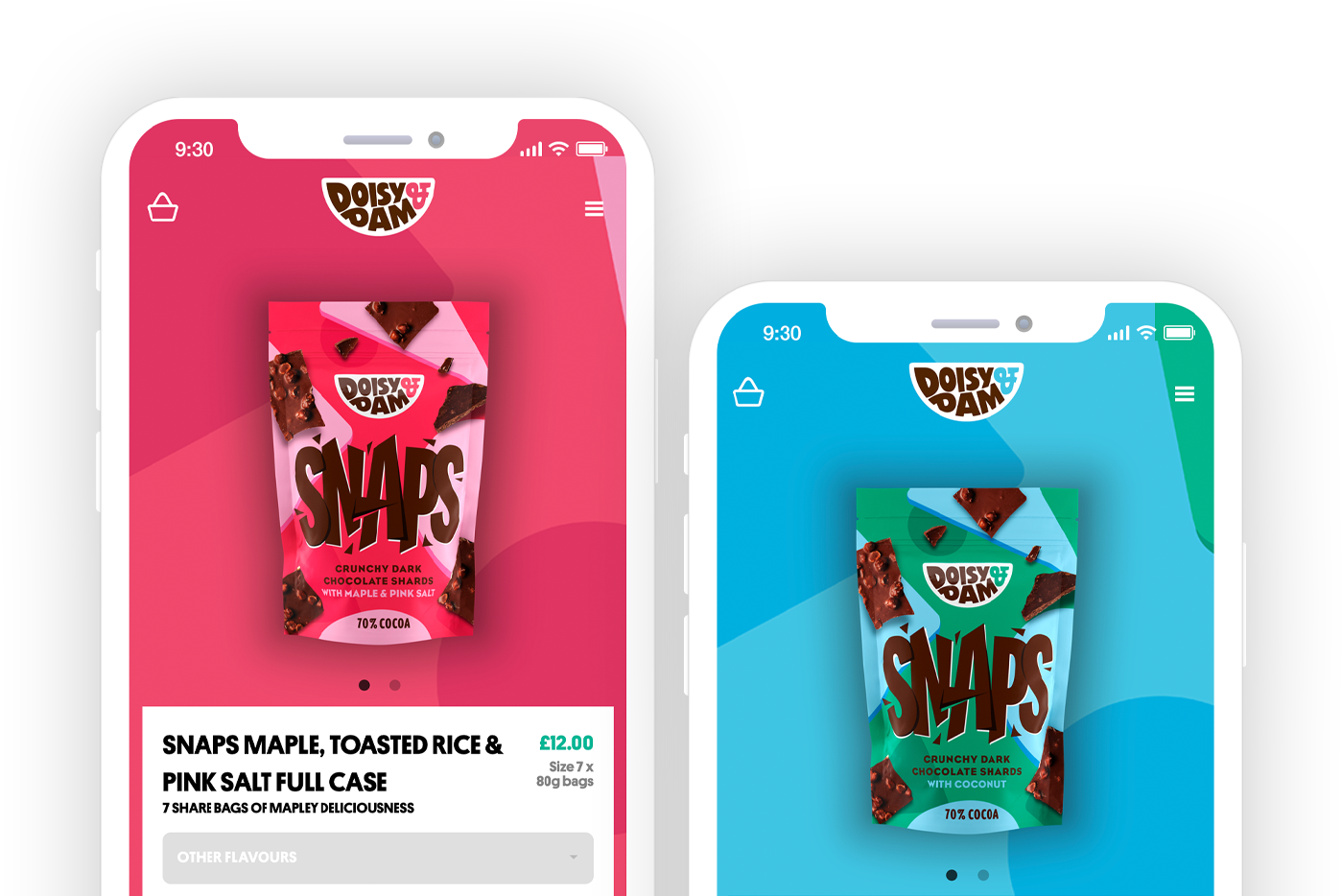Email marketing is a digital marketing strategy that involves sending commercial messages to a group of people via email. These messages could include advertisements, promotions, updates, newsletters, or any other type of content aimed at engaging the recipient and encouraging them to take action, such as making a purchase, signing up for a service, or visiting a website.
A Overview on Email Marketing
Direct Sales: One of the primary purposes of email marketing is to generate direct sales by promoting products or services directly to potential customers.
Lead Nurturing: Email marketing is also used for lead nurturing, where companies send targeted content to move leads through the sales funnel, building relationships and trust along the way.
Customer Engagement: Email marketing helps to engage with existing customers, keeping them informed about new products, updates, or special offers, and encouraging repeat business.
Brand Awareness: Through regular communication, email marketing helps to reinforce brand awareness and keep a company top-of-mind with its audience.
Components of Email Marketing
Email List: Building and maintaining a quality email list is crucial for email marketing success. This list consists of subscribers who have opted in to receive emails from a particular company or organization.
Email Content: Content may vary depending on the campaign objectives but typically includes subject lines, body text, images, links, and calls to action (CTAs).
Design and Layout: The design and layout of emails should be visually appealing, consistent with branding, and optimized for both desktop and mobile devices.
Segmentation: Segmenting email lists based on factors such as demographics, purchase history, or engagement levels allows for more targeted and relevant messaging.
Personalization: Personalizing emails with the recipient's name, location, or other relevant information can significantly increase engagement and conversion rates.
Automation: Email marketing automation allows for the scheduling and sending of emails based on predefined triggers or actions, such as sign-ups, purchases, or abandoned carts.
1. Global Reach
With over 4 billion active users worldwide, email remains one of the most ubiquitous and widely adopted communication platforms across all demographics and geographies. From bustling urban centers to remote rural areas, email serves as a universal connector, transcending barriers of distance and culture.
2. Email Accounts
The proliferation of email accounts continues unabated, with projections indicating that the number of active email accounts will soar to 5.6 billion by the end of 2025. This staggering figure underscores the enduring relevance and indispensability of email in both personal and professional spheres.
3. Daily Engagement
An astonishing 99% of consumers habitually check their email inbox on a daily basis, reaffirming its status as a primary touchpoint for communication and information consumption. This consistent engagement presents a prime opportunity for marketers to deliver timely and impactful messaging directly to their target audience.
4. ROI
The return on investment (ROI) of email marketing is nothing short of remarkable, with studies consistently demonstrating that for every $1 spent, the average ROI is a staggering $42. This exceptional ROI is attributed to various factors, including low overhead costs, precise targeting capabilities, and the ability to nurture leads throughout the entire customer journey.
5. Conversion Rates
Email marketing boasts an enviable conversion rate, outperforming other digital marketing channels by a considerable margin. On average, email campaigns yield a conversion rate of 6.05%, highlighting their unparalleled effectiveness in driving desired actions such as purchases, sign-ups, or downloads.
6. Personalization Impact
The era of one-size-fits-all marketing is long gone, replaced by a paradigm where personalization reigns supreme. Emails that are tailored to individual preferences and behaviors deliver six times higher transaction rates compared to generic counterparts. This personalized approach fosters deeper connections with recipients, leading to increased engagement and loyalty.
7. Mobile Opens
As smartphone usage continues to soar, mobile devices have become the preferred platform for accessing emails. Currently, over 46% of all email opens occur on mobile devices, necessitating the implementation of mobile-responsive email designs to ensure optimal viewing and engagement experiences.
8. Responsive Design
Emails that are optimized for mobile devices exhibit superior performance metrics, including higher click-through rates and enhanced user satisfaction. Studies indicate that mobile-responsive emails generate a remarkable 24% higher click-through rate compared to those that are not optimized for mobile, underscoring the importance of catering to the preferences of mobile-centric audiences.
9. Segmented Campaigns
The era of blanket messaging has given way to highly targeted and segmented email campaigns, which have proven to be significantly more effective in driving engagement and conversions. Research indicates that segmented email campaigns result in a staggering 760% increase in revenue compared to non-segmented ones, highlighting the transformative impact of personalized messaging.
10.Behavioral Targeting
Understanding and leveraging user behavior is paramount to the success of email marketing campaigns. Emails that are tailored based on recipient behavior, such as past purchases, browsing history, or interaction patterns, boast a 73% higher open rate and a 152% higher click-through rate compared to generic emails. This data-driven approach enables marketers to deliver relevant and timely content that resonates with recipients on a personal level.
11. Automation Impact
The advent of automation technology has revolutionized the landscape of email marketing, enabling marketers to streamline workflows, deliver targeted messages at scale, and drive significant improvements in efficiency and productivity. Automated email campaigns have been shown to drive a remarkable 14.5% increase in sales productivity, while simultaneously reducing marketing overhead by 12.2% on average.
.
12. Dynamic Content
Personalization extends beyond simple demographic segmentation to encompass dynamic content that adapts to the unique preferences and behaviors of individual recipients. Emails featuring dynamic content elements, such as personalized product recommendations, tailored offers, or dynamic images, generate a staggering 18 times more revenue than generic emails. This hyper-personalized approach fosters deeper engagement and drives higher conversion rates by delivering content that resonates with recipients on a personal level.
13. Open Rates
The open rate of an email, measured as the percentage of recipients who open the email out of the total number delivered, serves as a key indicator of its effectiveness in capturing attention and generating initial interest. While average open rates vary across industries and demographics, studies indicate that the global average hovers around 21.33%, with factors such as subject line, sender reputation, and timing exerting significant influence.
14. Click-Through Rates (CTR)
The click-through rate measures the percentage of recipients who clicked on one or more links within an email, providing valuable insights into the level of engagement and interest generated by the content. The average CTR for email campaigns stands at approximately 2.62%, although this figure can fluctuate based on factors such as content relevance, call-to-action clarity, and overall design aesthetics.
15. Deliverability Issues
Despite the widespread adoption of email marketing, deliverability remains a persistent challenge for marketers, with approximately 21% of opt-in emails failing to reach the intended recipient's inbox. Factors such as spam filters, sender reputation, and content relevance can significantly impact deliverability rates, highlighting the importance of adherence to best practices and ongoing monitoring and optimization efforts.
16. GDPR Compliance
The implementation of the General Data Protection Regulation (GDPR) has ushered in a new era of transparency and accountability in email marketing, compelling businesses to prioritize consumer privacy and data protection. Since its inception, 73% of marketers have reported an increase in email engagement rates attributed to more transparent and relevant communication practices, reinforcing the notion that trust and compliance are integral to fostering positive relationships with subscribers.
17. Interactive Emails
As consumer expectations continue to evolve, there is a growing demand for interactive and immersive email experiences that transcend traditional static content. Interactive emails, featuring elements such as quizzes, polls, surveys, and embedded videos, are gaining traction as a means of enhancing engagement, driving interactivity, and providing valuable insights into recipient preferences and behaviors.
18. AI Integration
The
integration of artificial intelligence (AI) technologies holds immense promise for the future of email marketing, enabling marketers to deliver hyper-personalized experiences at scale, optimize subject lines and content for maximum impact, and predict recipient behavior with unprecedented accuracy. AI-powered tools and algorithms can analyze vast datasets, identify patterns and trends, and automatically adapt and optimize email campaigns in real-time, thereby driving higher engagement, conversions, and ROI.
19. Customized Recommendations
Emails that include personalized product recommendations based on previous purchases or browsing behavior experience a 29% higher unique open rate and a 41% higher unique click rate than generic emails. Tailoring recommendations to individual preferences enhances the relevance of the email content, thereby increasing engagement and driving conversions.
20. Personalized Subject Lines
Subject lines personalized with the recipient's name have been found to increase open rates by 26%, demonstrating the impact of simple personalization techniques on email engagement. Additionally, incorporating dynamic elements such as location-based offers or milestone celebrations can further enhance the effectiveness of subject lines in capturing attention and encouraging recipients to open the email.
21. A/B Testing Impact
A/B testing, also known as split testing, allows marketers to compare the performance of different email elements, such as subject lines, CTAs, or content layouts, to identify the most effective variations. Emails that undergo A/B testing experience a 49% higher open rate and a 135% higher click-through rate compared to non-tested emails, highlighting the importance of iterative testing and optimization in maximizing campaign success.
22. Optimal Sending Times
Identifying the optimal timing for email delivery can significantly impact engagement and response rates. Research indicates that emails sent during off-peak hours, such as early mornings or late evenings, experience higher open and click-through rates compared to those sent during peak hours. By analyzing recipient behavior and testing different send times, marketers can optimize their email delivery schedules for maximum impact.
Email Marketing Statistics: Conclusion
Email marketing is a powerful strategy used by companies to reach people, nurture customers, and build brands. With an average email open rate of 59%, it's a key tactic for both B2B and B2C marketers. According to HubSpot, emails generate a high ROI, with 81% of businesses relying on them. Stats show that 55% of email users prefer marketing emails with emojis, while 50% of companies use email automation. Resources like Mailchimp and GetResponse offer software to streamline campaigns, while Campaign Monitor and Constant Contact dominate market share. For B2B marketers, content marketing through email newsletters can yield results, with 67% of customers influenced by promotional emails. Case in point: Litmus found that cart abandonment emails have a 36% conversion rate. To maximize engagement, consider using tactics like personalized templates and call-to-action buttons. According to Statista, the majority of millennials value email subscriptions for discounts and promotions. With the right strategies and resources, email marketing can deliver significant benefits for your company's communications goals.
In conclusion, email marketing continues to evolve as a dynamic and indispensable tool for businesses seeking to connect with their audiences effectively. By leveraging the insights gleaned from these email marketing statistics, marketers can refine their strategies, enhance customer engagement, and achieve remarkable results in an ever-evolving digital landscape. As technologies advance and consumer behaviors shift, staying informed and adaptable remains key to harnessing the full potential of email marketing and staying ahead of the curve in an increasingly competitive marketplace.
Email Marketing Statistics: Additional Comments
Email marketing is a vital component of any marketing strategy, driving clicks and engagement while minimizing bounce rates. Building a quality email list is crucial, and understanding email marketing stats can inform your approach. In this article, we'll explore industry tips for crafting an effective email marketing strategy that resonates with your audience. For example, Apple's marketing strategy often includes email campaigns promoting their latest products and events. Advertising through email is a cost-effective way to reach customers, and various marketing strategies can enhance the look and feel of your emails. Cart abandonment emails, for some, can be the difference between losing and converting a sale. Numbers don't lie: 53% of Americans prefer email for communications, while 77% of email subscribers are more likely to purchase from retail brands they've engaged with via email.
According to the Content Marketing Institute, email marketing has an impressive ROI of 77%, making it a worthwhile investment. By understanding email engagement statistics, you can tailor your email list to meet the needs and preferences of your audience. Whether it's through webinars, email frequency, or customer retention tactics, email marketing benchmarks can guide your strategy. With 66% of consumers checking their email on smartphones, it's essential to ensure your emails are optimized for mobile devices. From Gen X to real estate professionals, email marketing revenue can benefit a wide range of industries. Tools like OptinMonster can help you grow your email list and improve email engagement metrics. With changes in email app usage and evolving consumer preferences, staying knowledgeable about email marketing metrics is essential. Whether it's through blog posts, podcasts, or educational webinars, there are countless ways to stay informed and enhance your email marketing efforts.
Email Marketinh Statistics: FAQs
1. What is email marketing?
Email marketing refers to the practice of sending commercial messages to a targeted audience via email. It's a powerful tool for businesses to communicate with customers, promote products or services, and build brand awareness.
2. How do I build an email list?
Building an email list involves collecting email addresses from individuals who have opted in to receive communications from your business. This can be done through sign-up forms on your website, social media channels, or events, ensuring compliance with relevant regulations like GDPR.
3. What are some effective email marketing strategies?
Effective email marketing strategies include segmenting your audience, personalizing content, optimizing for mobile devices, and utilizing automation for timely and relevant messaging. It's also essential to track and analyze metrics to refine your approach over time.
4. How often should I send marketing emails?
The frequency of marketing emails depends on your audience and the nature of your business. It's generally recommended to find a balance between staying top-of-mind with your subscribers without overwhelming them. Testing different frequencies and monitoring engagement metrics can help determine the optimal email cadence.
5. What are some best practices for improving email engagement?
To improve email engagement, focus on delivering valuable content, using compelling subject lines, optimizing for mobile devices, and including clear calls-to-action. Personalization and segmentation can also enhance engagement by delivering targeted messages to specific segments of your audience.
6. How can I measure the success of my email marketing efforts?
Key metrics for measuring the success of email marketing campaigns include open rates, click-through rates, conversion rates, and unsubscribe rates. Tracking these metrics over time and comparing them to industry benchmarks can provide valuable insights into the effectiveness of your campaigns.
7. What are some common mistakes to avoid in email marketing?
Common mistakes in email marketing include sending irrelevant or overly promotional content, neglecting to optimize emails for mobile devices, failing to segment your audience, and disregarding subscriber preferences. It's also important to ensure compliance with relevant regulations and to regularly clean and maintain your email list.
8. How can I grow my email list?
To grow your email list, consider offering incentives such as discounts or exclusive content in exchange for email sign-ups. Promote your sign-up forms across your website, social media channels, and other marketing materials. Additionally, hosting webinars or events and collaborating with other businesses can help expand your reach and attract new subscribers.
9. How can I improve email deliverability
To improve email deliverability, focus on maintaining a clean and updated email list, avoiding spammy subject lines and content, and authenticating your domain with SPF, DKIM, and DMARC. Monitor bounce rates and engagement metrics closely, and promptly remove inactive or invalid email addresses to maintain a positive sender reputation.
10. What are the benefits of email marketing for small businesses?
Email marketing offers numerous benefits for small businesses, including cost-effectiveness, targeted messaging, scalability, and measurable results. It allows small businesses to reach and engage with their audience directly, build brand loyalty, and drive sales and conversions with minimal investment compared to traditional marketing channels.
Read Top Shopify Statistics 2023
Read Top Ecommerce Statistics 2023
Read Top TikTok Statistics 2023
Read Top Twitter / X Statistics 2023
Read Top Snapchat Statistics 2023
Read Top Influencer Marketing Statistics 2023


 Ross Adamson |
Marketing Exec - Charle Agency
Ross Adamson |
Marketing Exec - Charle Agency










